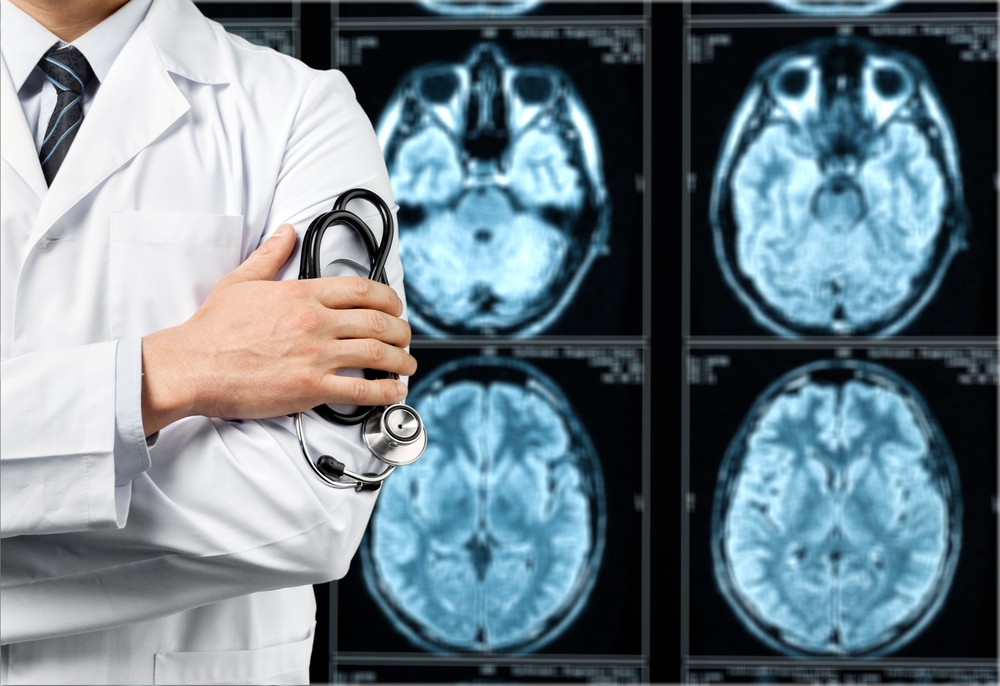Diving Deep
July 15, 2019

A 2-year-old girl from Scotland is now the youngest person in the world to undergo a brain surgery procedure that could reduce the symptoms of children living with dystonia.
Dystonia is a movement disorder that causes uncontrollable muscle contractions. These contractions can leave body parts twisted involuntarily and uncomfortably.
Those living with dystonia may experience repetitive motions as their muscles contract, or they may hold their affected body part in an abnormal posture.
The condition can affect one muscle, a muscle group or the entire body in some cases.
The American Association of Neurological Surgeons estimates that a quarter of a million people are living with the condition.
The patient, Viktoria Kaftanikaite, was just shy of 3 years old when she had the procedure, known as deep brain stimulation (DBS).
Viktoria had lived with the dystonia since birth and experienced constant flailing of her arms and legs. Her mouth also frequently twitched when she was awake.
There is currently no known cure.
Her condition was also incredibly uncomfortable, and she was often left screaming in pain. It also prevented her from eating and negatively affected her ability to breathe.
The physicians who treated Viktoria hope that since she was so young and tolerated her DBS procedure well, it could lead to making DBS the standard of care in treating young patients living with dystonia and cerebral palsy, or those who experienced an injury during birth.
During the procedure, surgeons drilled two holes into the top of Viktoria's skull and implanted two electrodes into a part of the brain known as the globus pallidus internus.
The globus pallidus internus is believed to be the "switch" that can control how the body moves.
Four contacts on each electrode were designed to send rapid electrical pulses at a rate of 130 times a second into the brain to reduce uncontrollable movements in hopes of the patient living a healthier, more comfortable and more normal life.
The electrodes are powered by a pacemaker-like device inserted in Viktoria's stomach.
After her DBS procedure, she is now recovering in the ICU in the Glasgow hospital where her procedure was performed. Her doctor will monitor her as she recovers to see if her painful spasms have been reduced and she is living a better quality of life.
"The ability to go deep into the brain to reset how the body moves in cases of dystonia, cerebral palsy and Parkinson's disease could mean significant benefits," said Dr. Faisal Jahangiri, CNIM, D. ABNM, FASNM, of AXIS Neuromonitoring in Richardson, Texas.
Since a lot is riding on DBS surgery, an extra step of safety is a good idea.
That step? Intraoperative neuromonitoring services in the operating room.
"Intraoperative neuromonitoring, or IONM, allows surgeons to see the impact of what they do in the brain on the rest of the body," Jahangiri said.
When IONM is used in the OR, highly trained technologists from AXIS are in the operating room, reading patient monitoring equipment for signs of changes.
"As the brain is a very delicate and very complex structure, any procedure in the brain has the power to affect the rest of the body, leaving parts paralyzed or dysfunctional," Jahangiri said.
These technologists and AXIS' interpreting physicians can quickly alert the surgeon about the state of the patient, giving them a chance to change their course and the outcomes for the patient.
"IONM can prevent serious lifelong, unintended after effects of surgery," Jahangiri said.
Source: The Guardian. Scottish girl is world's youngest deep brain stimulation patient. 10 July 2019
American Association of Neurological Surgeons. Dystonia. 2019.



